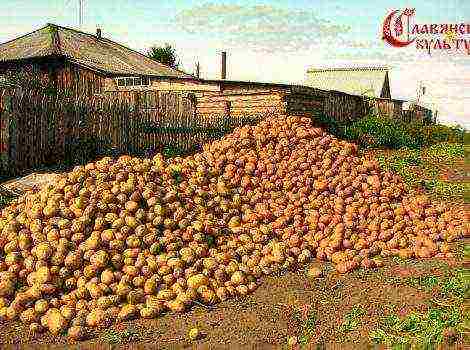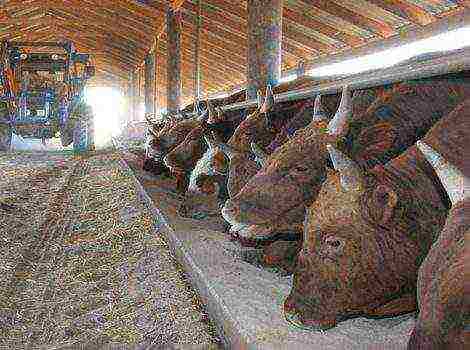Content
Currently, the Russian state is faced with the issue of accelerated import substitution, the solution of which is impossible without agriculture. It is the development of the agricultural sector that helps to ensure the proper level of food security in the country. This applies to both the Russian Federation as a whole and its individual regions, including the Krasnodar Territory. The area is ideal for this industry.
Krasnodar Territory as an agro-industrial region
Industry is fairly well developed in Russia. Agriculture of the Krasnodar Territory includes about 7 thousand enterprises with various forms of ownership. Of these, more than six hundred are large or medium-sized organizations. The agricultural sector employs approximately 400 thousand people.
The most widespread in the Kuban are:
- grain production;
- production of industrial crops;
- viticulture;
- sugar production;
- dairy industry.

Such a wide variety of branches of the agro-industrial complex is due to the unique type of climate, which creates favorable natural conditions in this territory. It is here that the border of the temperate and subtropical climatic zones passes.
Krasnodar Territory is rightfully considered one of the leading regions of Russia in the development of the agro-industrial complex. The total area of the Kuban is over 7.5 million hectares, of which 4.75 million hectares are occupied by agriculture. Normative regulation, as well as control over the development of the industry, is carried out by the Ministry of Agriculture of the Krasnodar Territory. The most important conditions for ensuring the progressive development of the agro-industrial complex are: the most efficient exploitation of fertile lands, the development of crop and livestock production, the improvement and modernization of the processing industry.
Agriculture structure
The modern agro-industrial complex of the Kuban is characterized by the predominance of crop production over livestock production. They account for 67.33 and 32.67%, respectively. In plant growing, the main specialization is the cultivation of grain crops. Sugar beets and sunflowers prevail among the technical species. The cultivation of forage crops is also a priority. For example, green fodder, silage, corn, etc. Sowing of potatoes and vegetables and melons is insignificant.
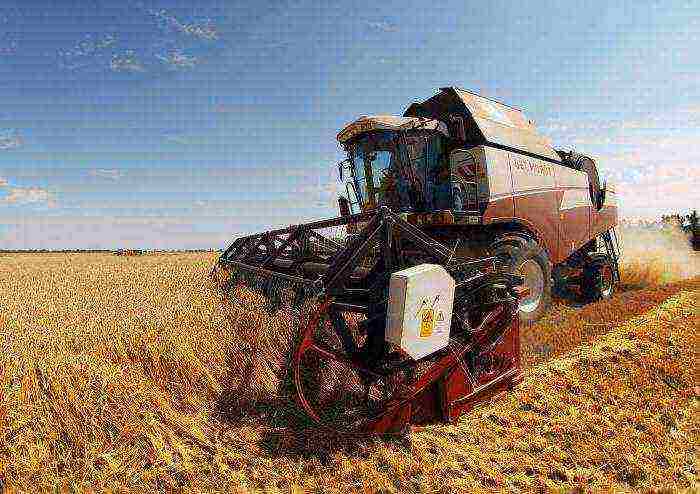
The agriculture of the Krasnodar Territory is gradually developing. Viticulture, horticulture and vegetable growing are being restored. The cultivation area of some subtropical crops is gradually increasing.
Livestock, in turn, is represented by the following industries: livestock, poultry, pig, sheep. The share of horse breeding, beekeeping, fur farming, fish breeding, rabbit breeding and ostrich breeding is significantly lower.
Grain production in the Krasnodar Territory
In the cultivation of grain crops, the largest share is given to winter wheat. The agriculture of the Krasnodar Territory is built in such a way that it is grown in all regions. Preference is given to wheat varieties that are resistant to drought and disease and have high yields. For example, Bezostaya-1 and Krasnodar-46. Kuban produces up to 10% of the gross volume of wheat throughout the country. Spring wheat in the structure of crops is 1-2%.
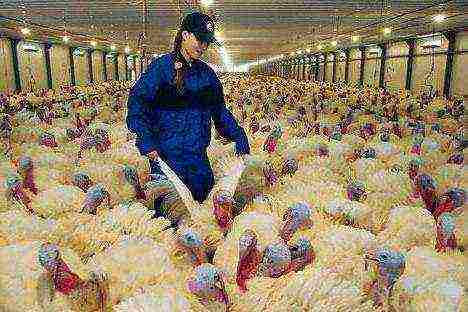
In second place is winter barley. It differs in heat tolerance, but less resistant to low temperatures.About 5-10% of the sown area is maize. It is demanding on the composition of the soil and needs a lot of fertilizers.
In the Kuban, they grow their own rice variety bred in this territory - Dubovskiy-129. To increase yields, it is necessary to use special agricultural techniques and an artificial irrigation regime. Rice sowing area accounts for 3% of the total land area for grain cultivation.
Viticulture
This industry has a significant impact on the agriculture of the Krasnodar Territory. Different grape varieties are grown throughout the region, as each requires a different type of climate. The most suitable conditions have developed in the Black Sea zone. About 50 varieties of grapes grow in the Kuban
Vegetable growing
Suitable climatic conditions have developed for this industry in the Krasnodar Territory. Vegetable crops include tomatoes, cabbage, cucumbers, potatoes, etc. Mainly, the south, west and center of Krasnodar Territory specialize in their cultivation.
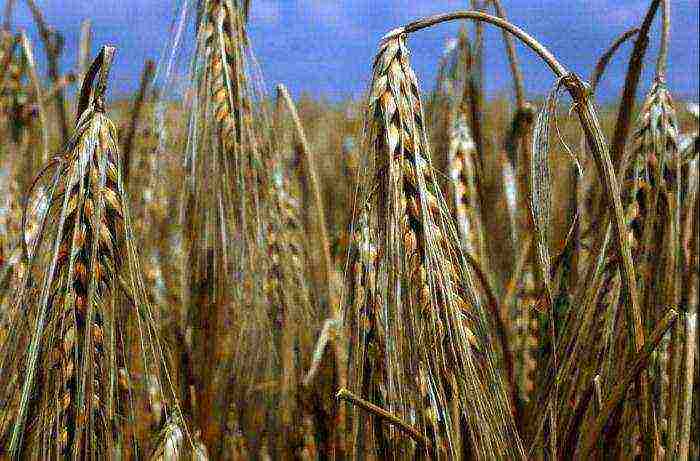
The foothill zone is most favorable for potatoes, although compared to the central regions of Russia, its yield in this area is low.
Gardening
The most suitable conditions for planting gardens have developed on the Black Sea coast, as well as in the west and south of the Azov-Kuban lowland. Mainly apple, plum, pear, peach, sweet cherry, cherry, apricot, etc. are grown here.
Melon growing
This industry predominates in the western regions. This is due to the fact that watermelons and melons require a lot of heat and sun. Pumpkin is most resistant to cold weather.
Livestock
The basis for the successful development of animal husbandry is the abundance of natural forage lands. Agriculture of the Krasnodar Territory provides for cattle grazing in the north-east of the foothills. Alpine pastures are rarely used here. Most of the feed is grown in the fields.
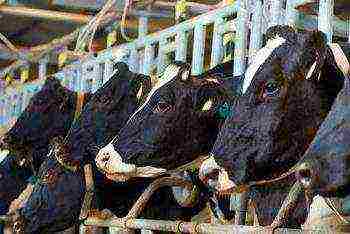
Breeding of dairy and meat cattle prevails here. Pig breeding is developed mainly in the central and northern parts of the Kuban. Large white pigs are mainly bred. Chickens predominate in poultry farming.
The program for the effective development of the agro-industrial complex of the Krasnodar Territory
The Department of Agriculture of the Krasnodar Territory has developed a program for the development of this industry. It provides for setting the following main tasks for the agro-industrial complex:
- improving the quality of agricultural and food industry products;
- development of human resources;
- restoration of abandoned land;
- improving the industry by maintaining soil fertility;
- assessment of existing investment needs, search for sources of funds.
Control over the implementation of the program is exercised by the Minister of Agriculture of the Krasnodar Territory.
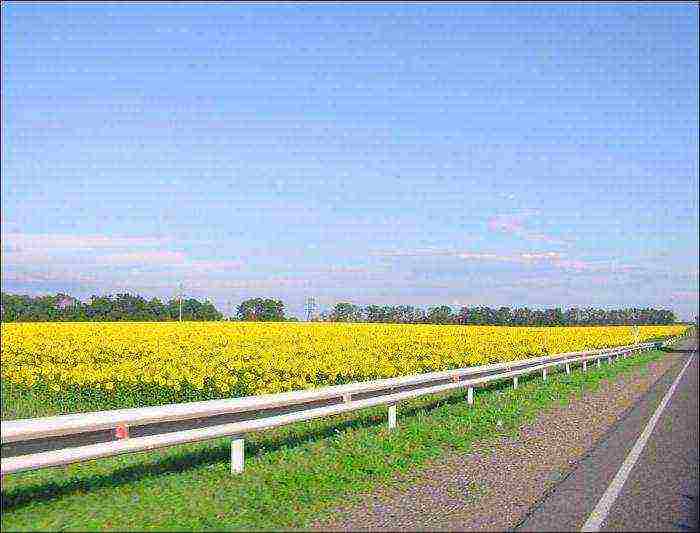
Thus, one of the leading regions that ensures the food security of the state is the Krasnodar Territory. Agricultural development plays a leading role in the economy of this region. The most widespread is crop production, especially grain production. The share of other industries in the structure of the agro-industrial complex is much smaller. Currently, there has been a positive trend towards the growth of agricultural production. First of all, this is due to the improvement of the pricing policy and the credit mechanism, as well as the increase in the volume of budgetary appropriations allocated for the development of the complex. In the long term, the competitiveness of the agricultural sector of the Krasnodar Territory will grow, both in the Russian and international markets.
§ 23. Factors contributing to the development of agriculture in the region. Crop production is the leading branch of agricultural production.
The main prerequisites for the development of agriculture in the region are its agro-climatic resources, the diversity of the soil cover, the predominantly flat character of the territory, the availability of labor resources, the possibility of technical equipment for agriculture. The scientific base created over the past decades has made it possible to raise agriculture to a fairly high level. Scientists have developed many new high-yielding plant varieties. At present, the region occupies a leading position in the production of many types of agricultural products. So, 75% of all rice grown in Russia falls on the share of our region. For grapes, factory sugar beets, the share of Kuban is 55% and 23%, respectively. In 2001, the Kanevsky District (5.5%), Timashevsky (4.4%), Novokubansky (4.3%), as well as Vyselkovsky, Krasnoarmeisky and Pavlovsky had the highest indices in the regional volume of agricultural products. And in terms of the volume of agricultural production per capita, the leaders were Shcherbinovsky, Vyselkovsky, Yeysky districts. The current stage of development of agriculture is characterized by the existence of enterprises of various forms of ownership: state enterprises, partnerships, cooperatives, joint stock companies. Peasant farms (over 23 thousand) occupy a significant place in the agro-industrial complex of the region. A program for their development has been developed and is being implemented, which provides for financial support, assistance in equipping farmsteads with roads, in providing them with electricity, water supply and communications.
Plant growing. Currently, crop production prevails in the gross agricultural production (67.33%), and livestock accounts for 32.67%. The region's crop production specializes in sowing grain crops, including wheat, barley, corn, rice, oats, and legumes. Beets and sunflowers are grown from industrial crops. For the needs of animal husbandry, forage crops are planted. Sowings of potatoes and vegetables and melons are not large (see Fig. 8).
It is interesting to know what was grown in the Kuban at the end of the last century. The crop structure has changed over the last century. In the Kuban, flax is no longer grown, the sowing of buckwheat, rye, spring wheat has been reduced, and less potatoes are planted. During this period, they mastered the cultivation of rice, began to sow more legumes, sugar beets, sunflowers.
The modern plant growing of the region is characterized by the development of grain growing, the cultivation of industrial and fodder crops (annual and perennial grasses, corn for silage and green fodder). Vegetable growing, horticulture and viticulture, cultivation of some subtropical crops are recovering their positions. To preserve the fertility of the Kuban lands, it is necessary to pay more attention to reclamation measures.
Cereals. In the field of Kuban cultivation, the leading place belongs to winter wheat. During archaeological excavations in the layer 2.5 thousand years ago, at the sites of the Scythian-Sarmatian tribes, grains of soft wheat, barley, and millet were found. The inhabitants of the Kuban region during this period traded in bread with the Bosporus kingdom.
In our region, winter wheat is cultivated in almost all regions, with the exception of mountainous ones. In the past, despite good natural conditions, wheat yields were extremely low due to primitive farming techniques. So, for example, in 1905 the yield was only 8.9 centners per hectare, in 1911 - 6.1 centners, in 1913 - 13.1 centners. The mechanization of agriculture made it possible in the 30s - 40s of the last century to raise the yield on average up to 16 centners per hectare. Until 1917, Kuban wheat accounted for about 13% of all wheat exports from Russia. Currently, the average yield of wheat in the region is from 42.8 c / ha to 45 c / ha.
The agricultural year 2002 has been particularly successful in recent decades.
A major contribution to the creation of high-yielding wheat varieties was made by the Kuban scientists of the Krasnodar Scientific Research Institute of Agriculture named after V.I.P.P. Lukyanenko. As a result of many years of experience, wonderful varieties of wheat have been bred. "Bezostaya-1" is distinguished by large grains (weight of 1000 pieces is 38 - 48 grams), drought resistance, disease resistance, has high baking properties. The variety has good baking quality and high yield.
"Krasnodar-46". Recently, such varieties as "Krasnodar-90", "Scythian", "Yuna", "Umanka" and others have been zoned in the region. In the “Kolos” OPH, a farm specializing in seed production of winter wheat and winter barley, the “beauty” wheat variety yields 80 c / ha.
The region accounts for up to 10% of the total volume of wheat produced in Russia. In 2002, a record harvest was harvested in the region - 7.5 million tons. In a number of regions, the yield was 60 c / ha.
Spring wheat crops are significantly inferior to winter wheat crops. Usually, in the structure of sown areas, spring wheat crops do not exceed 1 - 2%.
Winter barley in the structure of grain crops occupies the 2nd place after winter wheat. It is less winter-hardy, but more heat-tolerant than spring. The average yield is 44 centners per hectare. Barley is used in bakery, confectionery and beer production. Pearl barley and barley groats are made from it.
In the structure of sown areas, corn occupies 5-10%. Quite demanding on soil and climatic conditions. Throughout the growing season, it needs a large amount of organic and mineral fertilizers. Krasnodar scientists have created highly productive varieties of corn, the seeds of which are used for sowing in different regions of Russia. Unfortunately, the yield of corn for grain has recently been low: in 2001 it was 13.8 c / ha, while the prototypes give a yield of up to 76 c / ha. Corn is a very valuable crop as its entire biological crop can be used for processing. Medical preparations, food products are obtained from corn; green mass is a valuable forage crop. In the Kuban, corn is grown almost everywhere.
Our country is the northernmost rice-growing area. The first domestic rice variety "Dubovskiy-129" was created at the Kuban Rice Experimental Station. Currently, rice in the region is grown exclusively with artificial irrigation. The average yield reaches 50 c / ha (subject to the irrigation regime and proper agricultural technology).
Rice is a valuable food product for humans, as well as a valuable forage crop for animals. The processed products are used in the textile and perfume industries. The main areas of rice cultivation: Krasnoarmeisky, Slavyansky, Temryuksky. Rice crops in the region are small and account for about 3% of the total area of grain crops.
Legumes include soybeans, beans, peas, beans. These crops are used as fodder, industrial and food crops. In addition, legumes are excellent suppliers of nitrogen and other minerals for the soil. Half of the area under grain legumes in the region is devoted to peas. Its yield ranges from 20 to 25 kg / ha. Soybean crops are in second place. Recently, soybeans have been gaining strong positions all over the world. A variety of products are obtained from it, which have a huge protein and energy value. The region has all the prerequisites for increasing soybean crops, most of which are currently concentrated in the central regions of the region.
The technical culture includes crops used as raw materials for technical processing. Among them are sunflower, sugar beet, tobacco, essential oil crops, hemp, castor oil plant. The largest area is occupied by sunflower and sugar beet.
The most valuable sunflower varieties were bred at the All-Russian Research Institute of Oilseeds by Academician V.S.Pustovoit, whose name the institute bears.Sunflower is grown for the manufacture of oil, which is used in the food industry for the preparation of margarine, confectionery, canning. It is used in soap making and paint and varnish industries. Recycled waste is a valuable animal feed. Potash is obtained from the stems. Sunflower is grown everywhere, but the largest areas are
di he occupies in the northern and central parts of the region. This is due to the fact that sunflower is more drought tolerant than other industrial crops. Its yield is on average 14 c / ha.
Distinguish between sugar, semi-sugar and fodder beets. Fodder beets are distinguished by large root crops: from 800 to 1200 g, and sometimes up to 6 - 8 kg. Fodder beets are used for the preparation of juicy forages. It is less cold-hardy than sugar, and is inferior to it in drought resistance due to its less developed root system.
Since 1928, the areas of sugar beet crops in the Kuban have been expanding: this year, a sugar factory of union significance was built in the Korenovskaya station. At present, sugar beets are used to produce sugar, bagasse, molasses, and the tops are used as livestock feed. The most favorable soil and climatic conditions for beets are in the central zone of the region. Average yield - 220 kg / ha.
In 1920, on the basis of the Ekaterinodar Laboratory of Experimental Tobacco Growing, founded in 1914, the All-Union Scientific Research Institute of Tobacco and Makhorka (VITIM) was organized, which is the only scientific state institution in the tobacco industry of the Russian Federation. The Institute has created and regionalized more than 150 varieties of tobacco and makhorka. These thermophilic crops were widespread on the territory of the Kuban, the largest area of crops was in the foothill zone: Apsheronsky, Abinsky, Crimean, Seversky and Belorechensky districts. Raw materials are used not only for the manufacture of tobacco products. You can get citric acid from tobacco, valuable oils from tobacco seeds, and cellulose from tobacco stalks. In recent years, the area under crops of these crops has significantly decreased.
Hemp in the wild can be found as a weed. Southern hemp is of agricultural importance. High-quality fibers are made from it, which are used in the production of tarpaulins, ropes, canvas, twine. Hemp crops are concentrated in the central and southern parts of the region. Its processing is carried out at the Bryukhovetsky, Kanevsky, Kurganinsky plants.
Essential oil crops. They are widely used in medicine, food industry, perfumery, household chemicals and other industries. Soil and climatic conditions contribute to the cultivation of essential oil crops in the Kuban. We grow coriander, clary sage, eugenol basil, lavender, rose, peppermint, etc. Most of these crops are planted in coriander. It is used to obtain various essences. The meal (crushed seeds) of coriander is used as animal feed. Coriander is a valuable honey plant. Up to 400 kg of nectar are harvested from 1 hectare. The sown area of coriander is more than 10 thousand hectares. The average yield is 15 c / ha. Crops are located mainly in the northern part of the region. Coriander processing is carried out at the Ust-Labinsk essential oil plant.
Peppermint ranks second among the crops of essential oil crops. It is widely used in medicine, food industry. Essential oils of clary sage replace the most expensive aroma fixers (for example, ambergris). It is used in medicine, perfumery and cosmetic, soap making and confectionery industries. Sage is sown in the central and southern parts of the region. It is recommended to clean it at night, as the content of essential oils decreases during the day.
Rose oil is one of the most popular and expensive fragrances. In tsarist Russia, about 1000 kg of rose oil was imported annually from abroad.In the Kuban, its production began to develop in 1937. The Crimean red rose is grown for industrial purposes. The main cultivation areas are Krasnoarmeisky, Apsheronsky, Otradnensky and Labinsky. Gather rose petals in the early morning. Rose oil is widely used in perfumery, soap making, confectionery, alcoholic beverage production.
Vegetable growing. Favorable agro-climatic conditions led to the development of vegetable growing. The main vegetable crops are tomatoes, green peas, cabbage, eggplants, cucumbers, zucchini, potatoes, peppers, pumpkin and others. On their cultivation
the central, western and southern regions of the region are specialized. They are processed in Krymsk, Abinsk, Yeisk and other settlements. Potatoes yield a good harvest mainly in the foothill zone. Recently, the sown area for this crop has begun to increase (almost doubled on individual farms and subsidiary plots). The potato yield in the region is low (60 - 80 c / ha) compared to the yield in the central regions of Russia, where the climate and soil conditions are more favorable for this crop.
Melon growing. Melons and gourds are cultivated mainly in the western, as well as in the Beloglinsky, Kushchevs-kom and Ust-Labinsky districts. Watermelons and melons require a lot of heat to grow. They give a good harvest on sandy and sandy soils, and melons on loamy soils. Pumpkin is the most cold-resistant crop. For germination of its seeds, an average daily temperature of + 13 ° is sufficient.
Viticulture. Developed in most of the territory of the region. Depending on the soil and climatic conditions, the amount of precipitation in different regions, different varieties of grapes are grown. The Black Sea zone has the most favorable conditions. In its northwestern part, on Taman and in the Anapa region, table grape varieties are grown, varieties used for the production of vintage, champagne and grape juices: Riesling, aligote, Muscat, Pinot, Traminer, Rkatsiteli ... In total, more than 50 ty grape varieties. Once upon a time, barrels of vintage Riesling were delivered from here to the table of the Queen of England.
Many varieties of wines made by Kuban winemakers have won awards at various exhibitions and enjoy great success in the world market. The Abrau-Dyurso sparkling wine factory is well known far beyond the borders of Russia.
In the southern part of the Black Sea zone, mainly table grape varieties of different ripening periods are grown. In the foothill zone of the region, table varieties and varieties for the production of juices are cultivated. In the northern part of the region, which is characterized by aridity, high-quality technical varieties are grown for the production of wines, grape juice, table varieties, which are in demand in the region and beyond.
The main enterprises of the region for the processing of grapes are located in Anapsky, Temryuk, Yeisk, Gelendzhik, Crimean, Novokubansky, Gulkevichsky and other districts. Currently, the region accounts for more than 50% of the grapes produced in the country. The average yield is from 40 to 50 kg / ha.
Gardening. The main areas of horticulture are located in the western and southern parts of the Azov-Kuban lowland and on the Black Sea coast. Kuban gardens occupy about 90 thousand hectares. The gross harvest is more than 250 thousand tons with an average yield of 40 c / ha. In our gardens, southern heat-loving crops are grown: apple, pear, plum, cherry, sweet cherry, quince, cherry plum, peach, apricot, and on the Black Sea coast - and subtropical crops. The largest horticultural farms in the region are Sad-Gigant in the Slavyansky District, Novomikhaylovskoye in the Tuap-Sin District, and the Foothills of the Caucasus in the Seversky District. The North Caucasian Research Institute of Horticulture and Viticulture operates in Krasnodar, where scientists develop new high-yielding varieties of fruits and berries, and also deal with the problems of introducing intensive technologies for the production of fruits and berries.On the experimental fields of the research institutes, a high yield of various varieties of fruit and berry crops is collected.
Subtropical cultures. The subtropics of the region are the most northern in terms of their geographical position. They occupy a strip stretching for more than 150 km from the vicinity of Tuapse (in the north) to the Psou River (in the south) between the Main Caucasian ridge and the Black Sea. Long-term observations have shown that the northern nature of the subtropics requires the use of additional specific agrotechnical measures in this zone. In 1894, the Sochi Agricultural and Garden Station was organized, whose employees for many years studied subtropical crops and the possibilities of their distribution on the Black Sea coast of the region.
The yield of tangerines in some years reached 200 - 350 c / ha. But the often repeated cold winters made it necessary to grow only dwarf varieties. Tangerines are cultivated in the Adler, Khostinsky and Lazarevsky districts on a narrow coastal strip from 3 to 7 km.
A wide strip of tropics and subtropics between 10 ° north latitude and 10 ° south latitude is commonly called the "tea belt". However, industrial tea plantations can be found much further north. Krasnodar Territory is the northernmost "outpost" of the world tea cultivation.
In 1895 - 96 tea seeds were brought to Russia from China. The homeland of Russian tea is the village of Solokhaul, located on the banks of the Shakhe River at an altitude of 400 m above sea level. In 1901 the peasant I.A.Koshman planted 800 tea bushes, and in 1905 the first Russian tea was obtained. The tea bush is an evergreen plant. In the tropics, it reaches a height of 10 - 15 m, while in our country it is no more than 3 - 4 m.
Recently, the area for tea plantations in the region has decreased, and the yield has dropped sharply. In this regard, at the level of the Ministry of Agriculture of the Russian Federation, a decision was made to revive tea growing (September 2002).
The products of the tea-growing farms are processed at the enterprises that are part of Krasnodar Tea JSC. The main areas of tea cultivation are Khostinsky, Matsestinsky, Dagomysky, Adlersky.
§ 24. Animal husbandry.
The following factors contribute to the development of animal husbandry in the Kuban: a favorable climate, a natural forage base on the steppe plains and in the foothills, the intensive development of agriculture with developed crop production, the need of the 5 million population of the region for livestock products. Livestock in the region accounts for about 33% of the gross agricultural output. The Kuban market is saturated with products of local producers.
The basis of animal husbandry is fodder obtained from natural forage lands. The northeastern part of the foothill zone, represented by meadow vegetation, is used for grazing and gathering grasses for hay production. Alpine (alpine and subalpine) pastures occupy a relatively small area. Currently, cattle grazing there is sharply limited, since their intensive use in the 70s - 80s of the last century (16 - 19 thousand heads of cattle annually) led to significant erosion processes that adversely affected fodder resources. The bulk of the feed of all crops is grown on arable land. To a certain extent, the fodder base is replenished at the expense of wastes from the fish, dairy and meat industries, as well as mineralized additives in the form of chalk, limestone, etc.
From the branches of animal husbandry in our region are represented: cattle breeding, pig breeding, poultry breeding, sheep breeding. Some agricultural enterprises are engaged in horse
farming, beekeeping, fur farming, fish farming, rabbit farming and even ostrich farming. The region's share in the total Russian volume of meat products is small.
Cattle breeding. In value terms of livestock products, the leading place belongs to the breeding of cattle, mainly dairy and meat production.The following breeds of cows are widespread: red steppe, Swiss, black-and-white. The region is a supplier of pedigree livestock to the CIS countries.
Dairy farming is the most important branch of animal husbandry. Until 1990, in the kolkhozes of the region, it accounted for more than 39% of all production costs. 41% of the workers in the industry were employed here. The highest indices of the density of dairy cattle are typical for the central regions of the region. In 2001, the milk yield per cow was more than 4000 kg.
Favorable conditions in the regions of the southern foothill zone contribute to the development of meat cattle breeding.
Pig breeding. Distributed in areas of developed grain farming: 80% of the pig population is concentrated in the center and in the north of the region. The highest indicator of the number of pigs in farms was noted in 1980 - 3078 thousand heads. In 2002, it amounted to 1,677 thousand heads. The main breed of pigs is large white. Its share is 95% of the total pig population. The largest pig-feeding complex in the region is located in the Timashevsky district. It accounts for 10% of the regional pork production.
Poultry keeping. Developed consumer-oriented livestock industry (large settlements, cities). Chickens predominate in the bird population. Poultry farms produce meat and eggs. During the period from 1950 to 1990, the production of poultry meat in farms of all categories grew steadily.
Currently, the products of poultry farms are competitive and in demand. After several years of crisis, the performance in the poultry industry is improving. The production of eggs is 607 million pieces, and meat - 21.7 thousand tons per year. Most of the poultry farms are located in the northern and central parts of the region. Known for its products, OJSC Ku-banptitseprom Company. It includes 38 poultry enterprises. At the Krasnodar poultry farm, unique breeding breeds of geese are bred - Italian white and Kuban gray (24 thousand heads), which cover the region's need for breeding young. The production of goose meat is unprofitable due to the high cost price, but goose down and goose liver are highly valued. In Krasnodar, geese are plucked only at slaughter, and this should be done three times a year. There are not enough funds, specialists to start producing down (from which jackets and featherbeds are made) and making goose liver delicacies.
Interesting is the experience of a small ostrich farm near Krasnodar, which so far survives only thanks to the enthusiasm of its leaders. Breeding ostriches is practically waste-free production. The meat is valuable for its taste. Expensive ostrich feathers are used to decorate clothes. Scrambled eggs from one ostrich egg can feed 6 people, and egg shells are an excellent material for craftsmen.
Sheep breeding in the Kuban is a traditional industry, its main products are wool and meat.
Among the fine-wool breeds, the Soviet merino and the Caucasian merino are known. From semi-coarse-haired - Karakul, Ossetian, Tsigai. Coarse-haired (Caucasian) breeds predominated mainly in mountainous areas. Wool was processed not only at the enterprises of the region, but also far beyond its borders. Sheepskin is still in demand in leather and fur factories. Some of it is sold abroad. The bulk of sheep breeding farms are concentrated in the northern part of the region, where fine-wool sheep breeding prevails. In the southern foothill zone with a more humid climate, sheep of the meat-wool direction and semi-fine-fleece are bred.
In the Black Sea zone, Seversky, Goryacheklyuchevsky districts there are excellent natural conditions for goat breeding.
Horse breeding. The steppe zone and the Trans-Kuban region have long been used as pastures for horses. In the northern part of the region, the Black Sea horse breed was successfully bred, which was famous for its unpretentiousness, endurance, "intelligence".In the foothill zone, the Kabardian breed was mainly bred: it was valued for its endurance in mountain passages. Currently, horse breeding accounts for an insignificant share in animal husbandry. At the same time, thoroughbred horses are bred in Abinsky, Krasnoarmeysky and Novokubansky districts and even sold abroad. Especially famous is the bay horse Anilin (raised at the Voskhod stud farm), which won 22 races and left valuable offspring - 168 foals.
Beekeeping is a highly profitable industry. There is information that even the ancient Greeks exported honey and wax from the Kuban.
Pollinating bees play a special role in increasing crop yields. The productivity of one bee colony ranges from 35 to 45 kg of honey per year.
The vegetation of the region, blooming from early spring to late autumn, provides beekeeping with an excellent forage base. At present, this industry is gradually reviving, acquiring more and more importance in private peasant farms. Kuban honey is distinguished by its high taste, healing properties, and wax is used in medicine, perfumery and in some industries.
Among other branches of animal husbandry, fur farming (fur and meat production) stands out. Bred rabbits, minks, nutria. The Severinskoye animal husbandry of the Tbilisi region and the "Ladozhskoye" of the Ust-Labinsky region are known for their fur products.
Fish farming is of no small importance for the region, which satisfies the needs of the Kuban people in fish products. The region is rich in various water bodies that can be used for fish farming (numerous rivers, lakes, estuaries, ponds).
Since the settlement of the territory of the Kuban, local residents have been engaged in loli and fish farming. So, in 1796 the military judge Anton Golovat. writes in a letter to Ataman Zakhary Chepega about breeding fish and crayfish in Karasun: “I did not forget the words about the establishment of various fish and crayfish, but I did it ... I let the fish go from the Kuban. And the crayfish brought from Temryuk by mail, three wagons, so that they could multiply for the real pleasure of all citizens ... order through the governor to all who catch fish in the camp, return crayfish to the water and not exterminate them after two years. " In 1912, the newspaper "Kuban Krai" described a comical case of a living cancer that accidentally fell into a puddle at the intersection of Krasnaya and Karasunskaya streets. And the curious Yekaterinodar residents enjoyed admiring the free show.
The species composition of fish in our region is quite diverse and includes many valuable species. Among them are sturgeon, stellate sturgeon, vybets, shemaya, sterlet, beluga, white and black carp, ram, herring. But by the beginning of the 20th century, the number of fish in water bodies had greatly decreased. The reason was its predatory extermination even during the spawning period. In the 1950s-70s, the fish industry of the Kuban developed rapidly. Many fishing farms have been established. In the places of spawning of certain species of fish, reserves and fish-breeding stations were established.
At the end of the 20th century, the fishing industry is experiencing another decline. Predatory fishing has resulted in a sharp decline in fish stocks. The annual production of sturgeon from the Sea of Azov decreased from 1000 tons to 12-15 tons. In 2000, a ban on commercial sturgeon fishing was introduced for 10 years. To increase the sturgeon herd, fish farms use an original technique: with the help of a special incision, eggs are taken from the females, using it for further rearing of juveniles (then the female is released, after having sewn the incision together). 4 out of 5 females survive and after 2 years they again give up eggs (also, with the help of an incision). The sturgeon lives for several decades and only by the age of 12 acquires offspring.
Natural spawning grounds have suffered from human economic activity, and therefore the reproduction of fish has become a whole industry. At one time, the catch of tulka from Azov decreased, since it had an enemy - the ctenophore jellyfish.
In the Black Sea, sprat is caught for the production of canned food (sprat).For 20 years, work has been carried out to stock the Black Sea with steelhead salmon. Some fish species are exported. Germany and Holland purchase pike perch fillets.
The largest fishing areas are Temryuksky, Primorsko-Akhtarsky. At the mouth of the Protoka River there are Achuyevskiy fishing grounds. The Black Sea basin is also of great importance.
For the supply of fish products to the population of the region, fish are widely used, caught in the inland waters of the region (estuaries, ponds).
On the Psekups River near Goryachiy Klyuch, a fishing and shemay farm has been created. The nonresource-growing farms are developing quite successfully in the Staroshcherbinovskaya station, in the Tem-Ryuk district, in the town of Primorsko-Akhtarsk. Many fish farms are located in the northern part of the region. There, in the ponds, mirrored and golden carp are bred, and on the river. Mzymte, near the village. Krasnaya Polyana, there is a forestry farm, where fry of rainbow trout are grown for cage fish farming in the region.
Mussels are grown in the Utrish farm in the vicinity of Anapa, in the village. Betta (Gelendzhik region) and in the Adler region of Sochi. Breeding is complicated by the fact that mussels have a natural predator - rapan, accidentally brought to the Black Sea. The development of mariculture in the Azov-Black Sea basin, in comparison with its development in countries such as China and Japan, is insignificant.
Krasnodar Region has collected a record 9.05 million tons of wheat and is preparing to sell most of it in foreign markets
The harvesting of grain crops has been completed in KK. Despite a shift in the harvesting company due to erratic summer weather, the region harvested a record amount of wheat in 2017, as well as improved yields and quality.
Wheat harvest in KK exceeded 9.05 million tons, remaining the basis of crop production and all agriculture in the region. A year earlier, 8.5 million tons of wheat were harvested in the Kuban. Then the region took the second place in this indicator in Russia, yielding to the Rostov region (9.03 million tons). In the all-Russian production, the share of CC is approximately 11-12%.
Recall that the gross wheat harvest in 2016 was unprecedented in the modern history of Russia - 73.3 million tons, or almost 1/10 of world production. Globally, Russia has outstripped the United States and took the third position after India (97 million) and China (about 130 million). In 2017, the wheat harvest in Russia is projected at the level of 2016 or slightly higher.
As elsewhere in the south of the Russian Federation, due to the soils and climate in the Kuban, mainly winter varieties are grown, which give higher yields. According to the Federal State Statistics Service, for winter wheat in KK in 2017 1.45 million hectares land. This is almost 40% of the total sown area of agricultural crops in the region (3.68 million) and 5.4% of wheat crops in all of Russia (27.7 million hectares in 2016). In terms of wheat sown area, KK is inferior to the Rostov region (2.32 million), the Altai Territory (2.26 million), the Orenburg Territory, the Omsk Region, and Stavropol.
But Kuban is the absolute leader of the Russian Federation in terms of productivity. For winter wheat in 2017, it amounted to a record 64.9 c / ha... For comparison, the average in Russia is half as much - 26.8 c / ha, and the world average (according to the US Department of Agriculture) - 31.4 c / ha. The yield in KK is now comparable to such European countries as France and Great Britain, which became possible not only due to natural and climatic conditions, but also due to mechanization, the introduction of scientific achievements and the use of fertilizers. So, seven years ago, the wheat yield in the Kuban did not exceed 52 c / ha.
Another good news was a significant improvement in grain quality. The share of milling wheat in 2017 increased to 84% (grade 3 - 19%, grade 4 - 65%). The share of feed wheat is only 16%. This favorably distinguishes KK from other regions of the Russian Federation and increases the cost of products. In addition, for the first time in Russia in the Kuban, a small crop of 2nd class wheat was obtained.
The bulk of the Kuban grain will be exported.In the conditions of a “weak” ruble, it is stimulated by higher prices in foreign markets than in the country, and by the proximity of seaports. Through them, the most convenient access to large consumers of this category of products - Egypt and Turkey - is opened. Trade is also facilitated by the availability of a developed infrastructure for grain storage with a capacity of 12.7 million tons and the abolition of the corresponding export duty in autumn 2016.
According to the KK administration, annually, without prejudice to domestic consumption, the region has the opportunity to sell abroad about 6 million tons of grain from its harvest. In 2016, foreign trade participants registered in the Kuban sold 7.88 million tons or 24% abroad. total exports QC.
Largely thanks to the Kuban, in 2016 Russia for the first time became the world leader in wheat exports (25.32 million tons), displacing the United States (24 million). In general, Russian wheat exports over the past 5-7 years have grown by 30-40%. It is expected that the high 2017 harvest and carryover stocks will allow the Russian Federation to increase exports to over 30 million tons and thereby increase its share of the world market from 15 to 20%. The expansion of Russian wheat continues despite the prolonged drop in world prices for this commodity in dollar terms. The devaluation of the ruble and high yields play into the hands of domestic agricultural producers.
